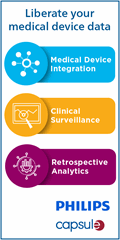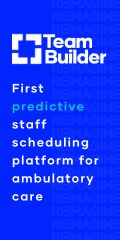I was always partial to a very fine mechanical pencil.
Sebelius Announces ICD-10 Implementation Delay
HHS Secretary Kathleen Sebelius has announced that the October 1, 2013 date for covered entities to implement the ICD-10 disease classification system will be pushed back to an unspecified date.
She was quoted in the HHS news release as saying,
ICD-10 codes are important to many positive improvements in our health care system. We have heard from many in the provider community who have concerns about the administrative burdens they face in the years ahead. We are committing to work through the rulemaking process, with the provider community, to reexamine the pace at which HHS and the nation implement these important improvements to our health care system.
ICD-10 was adopted by the World Health Organization in 1992 and is used by every industrialized nation other than the United States for morbidity reporting, limiting the ability of the US to use and contribute to global health studies and surveillance. The rule setting the October 1, 2013 implementation data was originally published in January 2009.
HHS says a new compliance date will be announced in future rules.
Update: HHS has pulled the announcement page down.
Update 2: HHS changed the date of the announcement to today’s date, which gave the page a new link here. We thought it was odd that an apparently new major announcement had yesterday’s date and wasn’t appearing on HHS’s home page. They have fixed that.




















































































Phew…
According to the post, the rest of the World uses it for morbidity reporting. I’d be curious how much of the rest of the World uses ICD-10 for all coding, beyond just cause of death.
The US uses ICD-10 already for cause of death reporting. The rest of the world, save a handful of countries like Tanzania, use ICD-10 for coding.
I really hope this spurns an aggressive assessment of all clinical ontologies out there; I’d love to see some traction for SNOMED-CT in the US. It would also be ideal if we standardized on one set instead of the mishmash that was going to be implemented in 2013 using CPT and ICD codes.
The link to the announcement is returning a page not found response.
[From Mr. H] Interesting … HHS has pulled the page down. I also thought it was curious that the date on the release was yesterday (2/15), but it was put up this morning. I’m not sure what’s going on. Maybe they didn’t intend for this go out just yet.
I doubt CMS will never accept SNOMED-CT as an option for administrative coding, because it does not incorporate administrative concepts (most notably the “first encounter”/”subsequent encounter” dichotomy) that they want to help facilitate new payment approaches, like episode-based payment.
A lot of people don’t realize that what CMS is requiring in the U.S. is ICD-10-CM, not ICD-10. ICD-10-CM is a modification by the U.S. National Center for Health Statistics of ICD-10, which is maintained by WHO. The “first encounter”/”subsequent encounter” dichotomy, and other significant aspects of ICD-10-CM, are unique to the “CM” flavor and are not found in the WHO version of ICD-10 in use in many countries around the world.
Apparently the only thing government is good for is causing uncertainty.
Oops, unintentional double-negative. I meant “…doubt CMS will ever accept…”
If the rest of the world takes a long walk off a short bridge, should the U.S. do it, too?
And if initial vs. subsequent encounter is so danged important, here’s a brilliant idea: ask for it in a separate data element!
This is due to the AMA, which requested this delay. Somehow, with just 18 months until the due date, their members decided that 6 years was not enough lead time to get ready for the switch to ICD-10.
Never underestimate the lobbying power of the AMA.
As we investigated this, we found that the most significant issue is historical data which is coded with ICD-9 codes. Ironically, this would have the largest impact on those practices that have been electronic the longest; they may have ten years or more of ICD-9-based historical data.
We had concluded that where we would actually end up would not be ICD-10, but ICD-9 + ICD-10. I’m not sure that’s an improvement.
There are, incidentally, some pretty crazy concepts in ICD-10-CM. Take, for example:
T71.112
Asphyxiation due to smothering under pillow, intentional self-harm
Has anyone in the history of the world ever tried to commit suicide by smothering themselves with a pillow?
> Asphyxiation
> due to smothering under pillow,
> intentional self-harm
Can someone elaborate on why ICD-10 coalesces the diagnosis, root cause and motivating factor into a single code? Why not jam more stuff in there like gender, whether the patient is left or right handed, was this first attempt or successive attempt, etc., etc.? Sure it becomes absurd at some point, but stop and think – perhaps it’s already reached that point?
Asphyxiation due to smothering under a pillow, intentional self harm, duct tape.
Fellow Colleagues,
You are witnessing on the greatest Coup d’étatin in medical history to date. Look for SNOMED to mysteriously appear on you hospital servers. The AMA won with a little help from your friends.